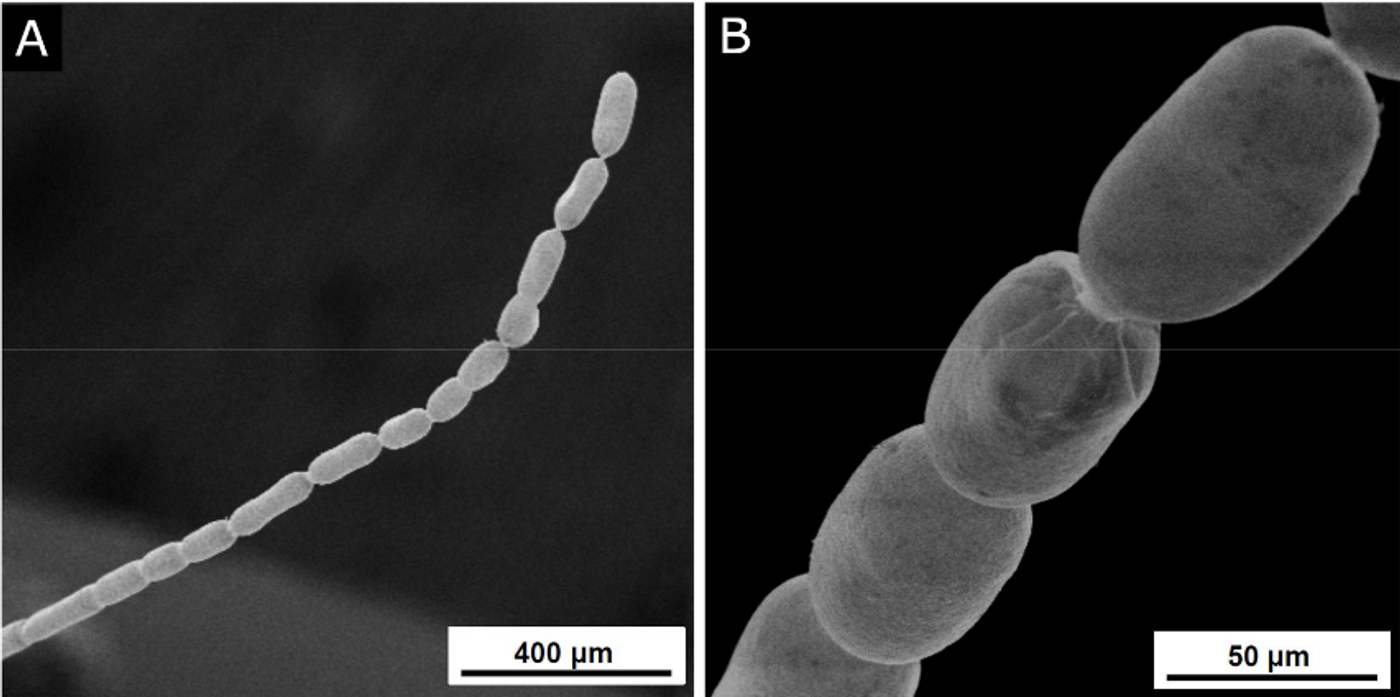Massive Cell Blurs the Line Between Life Forms
How much do we know about the vast number of microbes that live nearly everywhere on Earth? It seems that although we've been able to isolate a few microbes and grow them easily in the laboratory, in some cases harnessing them for our purposes, we still don't know much about the many microorganisms on our planet, which include viruses, bacteria, and archaea, a branch of life that was only recognized in recent decades. Most microbes are also extremely small, and not visible to the naked eye. However, some larger cells, even giants, have been identified.
Scientists have now reported the discovery of a huge bacterial cell on the preprint server bioRxiv. A team of researchers from institutions in France and the United States have found and characterized the intriguing features of a filamentous, marine microbe that is a type of Thiomargarita species. Just one of these cells is about one centimeter long, making it around fifty times bigger than most other known bacterial cells.
The microbe was first identified by study co-author and marine biologist Olivier Gros of the University of the French Antilles while doing field work in mangrove swamps about ten years ago. But researchers only realized it was a kind of bacterial cell about five years ago, and the species was characterized in detail recently.
The report noted that each filament, about a centimeter in length, represents a single cell that contains genetic material that is sequestered into a sac and a ribosome that is like a kind of organelle, which is very unusual for bacteria. The typical view is that bacterial cells do not have membrane-bound organelles, and their ribosomes are considered to be more like protein complexes than the ribosomal organelles seen in the eukaryotic cells that animals carry. These new cells seem to straddle the line between prokaryotes and eukaryotes.
Like other giant bacterial cells, this one contains a huge sac that probably holds water. It takes up nearly three-quarters of the cell's volume.
When the researchers sequenced the DNA from five of these bacterial cells, they found huge genomes that contain about 11,000 genes, compared to the bacterial average of around 4,000. Within that genome are special elongation and division mechanisms.
The scientists speculated that the bacterial cells can use these unique genetic features to circumvent some of the limits on growth that are seen in most organisms, and thus, they can grow to be unusually large. The team was inspired to name this microbe by its remarkable size, and called it Thiomargarita magnifica.









